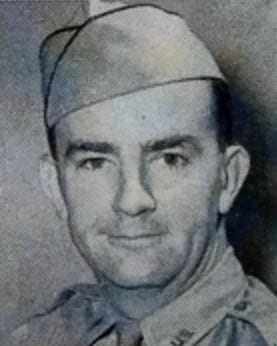Wes Gallagher was at the forefront of the war in Europe
In media circles, Wes Gallagher is mostly remembered for his work in transforming the Associated Press into a modern news operation during his time leading the service in the '60s and '70s.
But it was during and just after World War II that Gallagher made a name for himself at the AP, covering one critical story after another throughout the 1940s. Born Oct. 6, 1911 in San Francisco, Gallagher joined the AP in Buffalo in 1937 and went overseas in 1940.
Gallagher was in Copenhagen when the Germans invaded Denmark on April 9, 1940 and in Athens when the Greek capital fell just over a year later. In early 1942, he accompanied Gen. Dwight D. Eisenhower during the Allied invasion of North Africa.
By early 1943, Gallagher's byline was sufficiently familiar that an AP story reporting he had been injured in a jeep accident in Bizerte, Tunisia, ran on the front page of many U.S. newspapers. Though the story downplayed the severity of his injuries, Gallagher fractured his spine in the incident and had to return to the U.S. for treatment.
Once healed, Gallagher headed to London to take charge of the AP's field coverage of the impending invasion of northwest Europe. He joined AP London bureau chief Robert Bunnelle in assigning more than 20 AP correspondents and photographers to various duties ahead of D-Day, but the job of writing the lead story from the Ministry of Information in London fell to him. Gallagher wrote about it in 1984:
We were locked up in a room of the ministry and handed a very brief communique that the Allies had landed in Northern France. No questions were answered. We had to build on that. I managed 1,300 words from preparedness material I had brought with me.
The copy was censored on the spot -- one copy returned to me, the other placed in a dispatch bag and given to an Army motorcycle rider who would stand outside the AP's office until 9:30 a.m., then hand the copy over to Bob Bunnelle.
Gallagher's dispatch hit the wire at 9:33 a.m. and served as the lead story in newspaper extra editions across the United States and beyond on June 6. The initial version began:
"Allied troops landed on the Normandy coast of France in tremendous strength by cloudy daylight today and stormed several miles inland with tanks and infantry in the grand assault which Gen. Dwight D. Eisenhower called a crusade in which "we will accept nothing less than full victory.'"
Eisenhower's forces achieved that aim less than a year later, but Gallagher kept on reporting. The above photo shows the AP correspondent, at front left, rushing to a telephone in Nuremberg on October 1, 1946 to report that Hermann Goering and 10 other Nazi leaders had been sentenced to death for crimes against humanity.
Gallagher's story got to the wire two minutes faster than the competition's thanks to a bit of pre-planning: His wife Betty was waiting at a telephone with a line open so he could jump in and get his bulletin out immediately.
Gallagher returned to the AP’s New York headquarters in 1951 and began his rise through the executive ranks. He became assistant general manager of the service in 1954, general manager in 1962, and added the title of president in 1972 before retiring four years later.
Wes and Betty Gallagher moved to Santa Barbara, California, where he died of congestive heart failure in 1997, five days after his 86th birthday.





